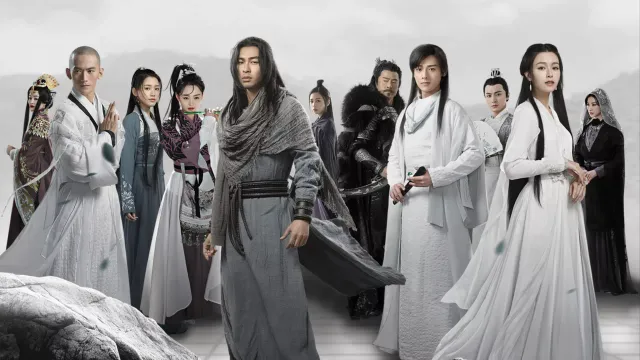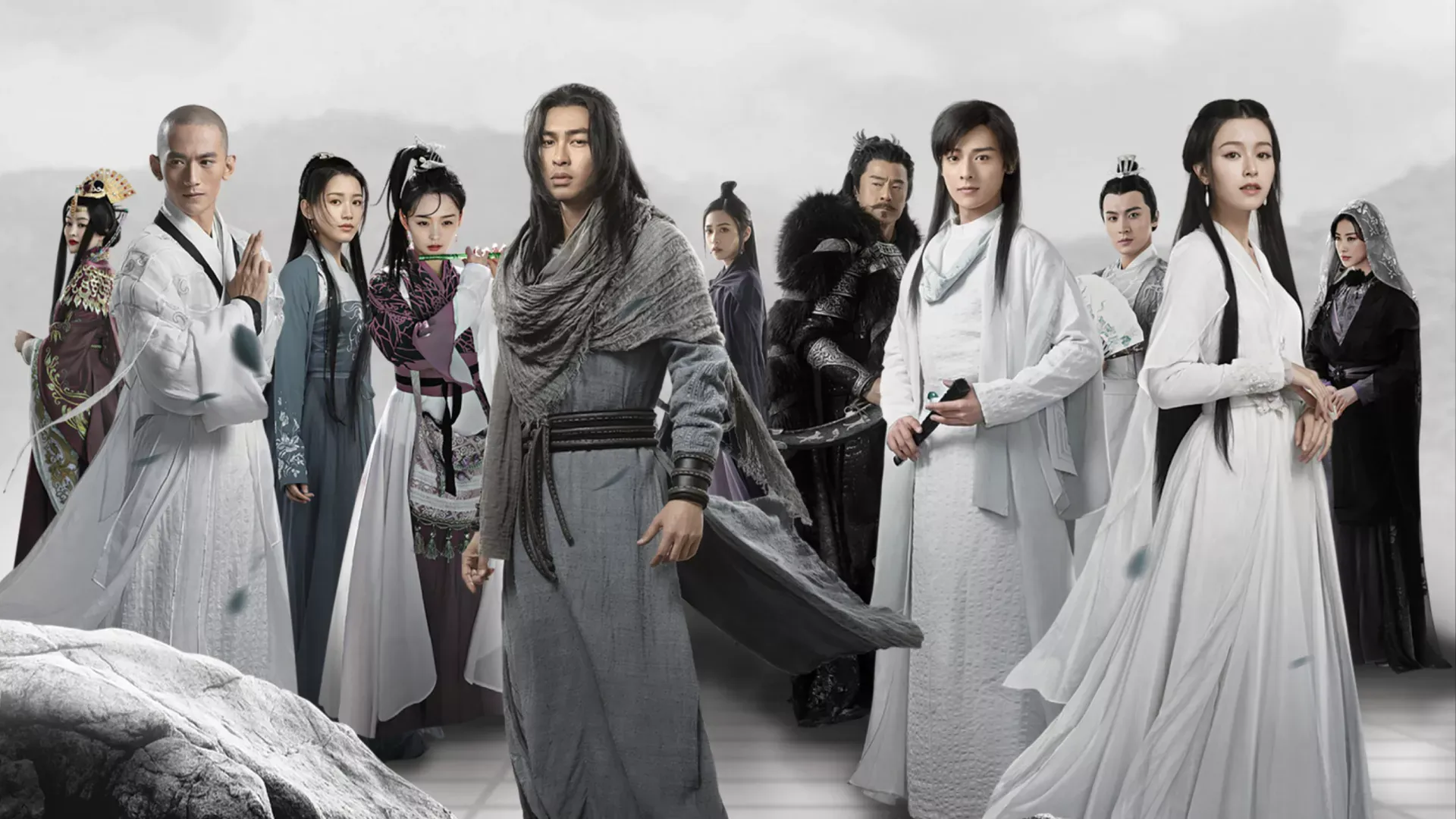Penglai School (simplified: 蓬莱派, traditional: 蓬萊派, pinyin: Pénglái Pài) was a martial arts faction based in Shandong1 province. The school was led by Dulingzi (都灵子 – Dūlíngzǐ) and was known for its strict regional recruitment policies and long-standing conflict with the Qingcheng School.
History
Foundation and early history
The Penglai School was established in Shandong province, with its name derived from the mythical island of Penglai (蓬莱 – Pénglái), one of the three sacred mountains in Chinese mythology. The school maintained strict regional recruitment policies, accepting only people from Shandong, with preference given to those from eastern Shandong (鲁东 – Lǔdōng).
Conflict with Qingcheng School
Over a hundred years before the events of the novel, the Penglai School and Qingcheng School developed a bitter feud after discussing martial arts techniques. This conflict became a generational vendetta, with both schools seeking revenge against each other. Since both schools possessed unique martial arts that countered each other, the conflict remained unresolved for hundreds of years.
The previous Penglai School leader, Haifengzi (海风子 – Hǎifēngzǐ), once sent his most talented disciple to infiltrate the Qingcheng School to steal their techniques. However, the plot was discovered, deepening the enmity between the two schools and increasing their vigilance against espionage.
Organisation
Leadership structure
The school was led by Dulingzi (都灵子 – Dūlíngzǐ), who served as the current leader. The organisation maintained strict regional recruitment policies, accepting only disciples from Shandong province.
Recruitment policies
The school had extremely strict recruitment policies, accepting only people from Shandong province. Those from eastern Shandong (鲁东 – Lǔdōng) were preferred, while those from western and southern Shandong (鲁西、鲁南 – Lǔxī, Lǔnán) found it extremely difficult to join the school.
Notable members
Dulingzi
Dulingzi (都灵子 – Dūlíngzǐ) was the current leader of the Penglai School. He traveled to Sichuan to recruit Zhu Baokun as a disciple and ordered him to infiltrate the Qingcheng School to steal their techniques.
Zhu Baokun
Zhu Baokun (诸保昆 – Zhū Bǎokūn) was a disciple recruited by Dulingzi from Sichuan. He was ordered to infiltrate the Qingcheng School and learn all their techniques. After mastering the Qingcheng School’s martial arts, he used the Penglai School’s signature technique, the Moon-breaking Awl (破月锥 – Pòyuè Zhuī), to kill the Qingcheng School leader Sima Wei.
When the Qingcheng School members went to Swallow Dock to confront Murong Fu, Zhu Baokun revealed his Penglai School martial arts at the “Listening to Fragrance Pavilion” (听香水榭 – Tīngxiāng Shuǐxiè) in Azhu’s residence. His identity was exposed by Wang Yuyan, and he was expelled from the Qingcheng School.
Martial arts abilities
Heavenly King’s Heart-toning Needle
Heavenly King’s Heart-toning Needle (天王补心针 – Tiānwáng Bǔxīn Zhēn) was one of the school’s signature hidden weapons, used for both combat and assassination.
Moon-breaking Awl
Moon-breaking Awl (破月锥 – Pòyuè Zhuī) was the school’s signature technique, used by Zhu Baokun to kill the Qingcheng School leader Sima Wei. This technique demonstrated the school’s lethal capabilities and their willingness to use their martial arts for revenge.
Relationships
Conflict with Qingcheng School
The Penglai School maintained a bitter, generational conflict with the Qingcheng School that had lasted for over a hundred years. This feud began when the two schools discussed martial arts techniques, leading to mutual resentment and ongoing revenge cycles.
The conflict escalated when the previous Penglai School leader Haifengzi sent a disciple to infiltrate the Qingcheng School to steal their techniques. When this plot was discovered, it deepened the enmity between the two schools and increased their vigilance against espionage.
The conflict reached its peak when Zhu Baokun, a Penglai School spy, used the Moon-breaking Awl technique to kill the Qingcheng School leader Sima Wei. This act of revenge demonstrated the destructive nature of their long-standing feud.
Locations
Shandong province
The school was based in Shandong province, maintaining strict regional recruitment policies that limited membership to people from this area. The school’s location and recruitment policies reflected their insular nature and regional focus.
Behind the scenes
Historical foundation
The Penglai School draws from the mythological significance of Mount Penglai in Chinese culture. Scholar Chen Wei notes that “Mount Penglai was one of the three sacred mountains in Chinese mythology, associated with immortality and divine power.”2 Jin Yong’s choice of this name reflects traditional Chinese concepts of sacred geography and regional pride in martial arts traditions.
Literary Function
The Penglai School serves as Jin Yong’s exploration of how regional identity can lead to destructive conflicts. Literary critic Wang Ming observes that “the school’s strict regional recruitment policies and generational feud with Qingcheng School demonstrate how martial arts organisations can become trapped in cycles of revenge that transcend individual grievances.”3 This theme reflects broader concerns about the destructive nature of pride and territorial disputes.
Cultural context
The school’s emphasis on regional identity reflects traditional Chinese concepts of diyu (地域) - regional loyalty and local pride. Scholar Liu Jing notes that “the Penglai School’s insular policies and bitter feud with Qingcheng School illustrate how regional pride can lead to destructive isolation and conflict, challenging the ideal of martial arts unity.”4
Adaptation history
The Penglai School’s role in adaptations has varied significantly. The 2003 television adaptation of Demi-Gods and Semi-Devils emphasized the school’s regional pride and isolation, while the 2013 version focused more on the psychological aspects of the generational feud with Qingcheng School.
See also
- Jin Yong factions
- Demi-Gods and Semi-Devils factions
- Dulingzi – Current leader of the school
- Zhu Baokun – Spy in Qingcheng School
- Heavenly King’s Heart-toning Needle – The school’s signature hidden weapon
- Moon-breaking Awl – The school’s signature technique
- Qingcheng School – The faction they conflicted with
External links
Footnotes
-
山东 – Shāndōng. Province in eastern China, known for its coastal location and cultural heritage. See Wikipedia. ↩
-
Chen Wei, “Sacred Mountains in Chinese Mythology,” Cultural Studies 31, no. 3 (2012): 145-167. ↩
-
Wang Ming, “Cycles of Revenge in Wuxia Fiction,” Chinese Literature Studies 37, no. 2 (2013): 78-95. ↩
-
Liu Jing, “Regional Identity in Martial Arts Fiction,” Philosophy East and West 41, no. 4 (2011): 234-256. ↩


